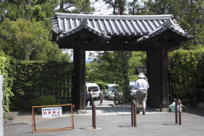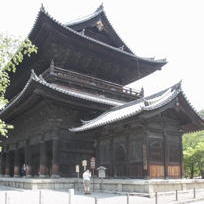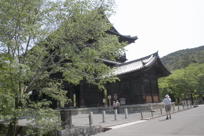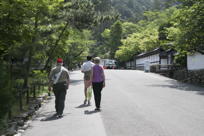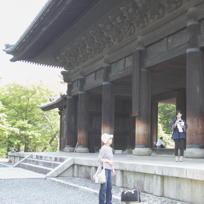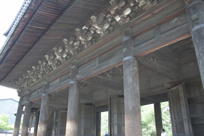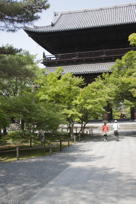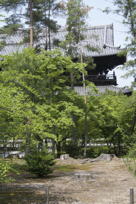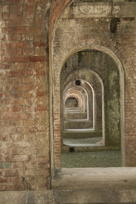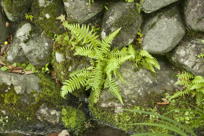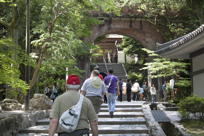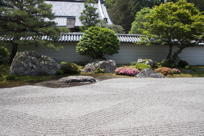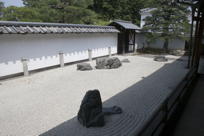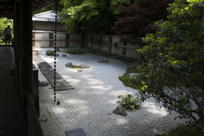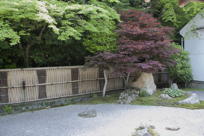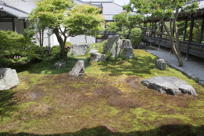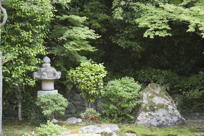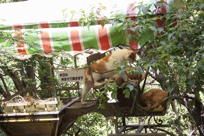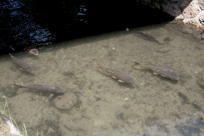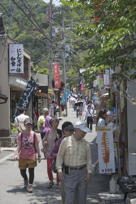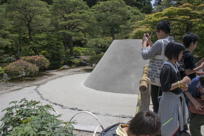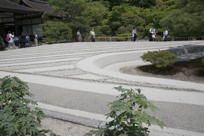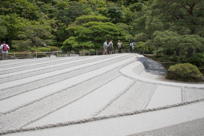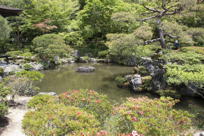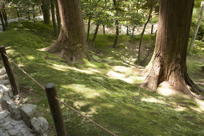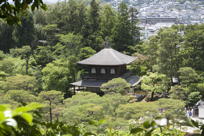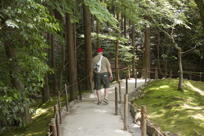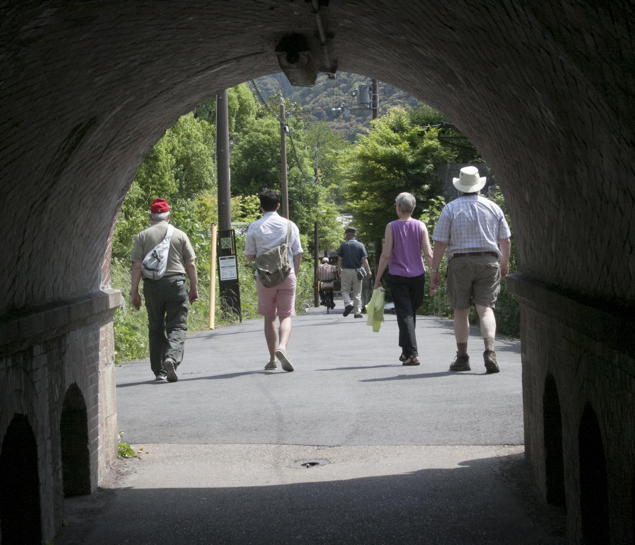
|
| Starting the day out (bigger image). |
Thursday, 29 May: our
third day in
Kyōto ( part I )
Once again, I took so many pictures this day, over 200 of them, that I’m splitting the day’s narrative in two.
Mason had spotted a coffee-shop near the Kyōto station, and wanted to try it out for breakfast. Accordingly we went there early, and had what was a relatively Western-style meal. I had a ham and egg sandwich, a nice change, even if I seem to recall that the bread was somewhat Wonder. But there was coffee.
The first sight of the day was the Nanzen-ji Temple, it’s a center of one of the Zen branches of Buddhism. As to the pictures to the left, the top left one is the first gate to the temple, the sōmon. The big deal is the main gate, the sanmon, and that’s what you see in all the bottom four pictures in this block. It seems obvious that this building is very old.
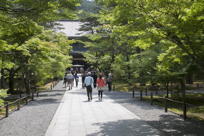
Approaching the temple
(big image, small).
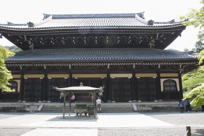
But that was just the gate, and we had to get to the main building of the temple itself, the butsuden. In the pictures to the right, at the top all our group is way ahead, and in the picture below that, the butsuden, with Mark standing all alone in front of it.
In the block of five pictures below, in the top row two more pictures of the main temple building; the middle picture I liked because it shows two people up on the second level. The right picture in the top row shows some arches of an aqueduct. So un-Japanese!
| ||||||
|
This is one of the temples that has raked gravel gardens. I think these were very refined, especially in comparison to those that we saw later in the day. I really liked the one in the middle in the top row, with its lonely boulders, but I wished that it hadn’t been half in shadow. Perhaps in the early evening, when it would be all shaded?
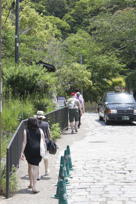
There were lovely expanses of moss, too, in these gardens, and I think I appreciated this spot more than any of the other gardens we saw.
The Nanzen-ji marks one of the ends of the Philosopher’s Walk, a pleasant mostly-shady amble along a small canal. I think that I didn’t take as many pictures along the way as I might have.
Not exactly a philosopher’s pleasure {Mark would disagree}, an early sight along the Walk shows us a Cat Lady, who would seem to have a regular station along the Walk. Here her cats are afforded all the comforts of home. Maybe even more than home.
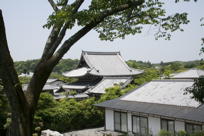
The Walk is by no means way out in the woods. In fact, there’s development all around, as you can see in the picture to the right. Yet it’s quiet and pleasant.
We had been accosted by young teenagers a few times already, starting several days earlier, but I think it happened more often this day. As usual, the kids wanted to practice their English, and as usual, they left it to the most capable among their group to do most of the talking.
In the canal, we saw some very large carp. Most were the natural, wild-type, clay-gray color, but Mark has included a picture of a big golden one that we saw here.
Our next objective was the “Silver Pavilion”, more officially the Ginkaku-ji, another Buddhist temple of course. In the block of pictures to the right, the upper left picture shows us on our way; fifteen minutes later we were there, and that’s the Pavilion itself in the snap below. Evidently a teacher is being guide to his students in the foreground.
But in the column of three pictures in the right of that block, you get three views of the shaped sand that seems to be a noted feature of the gardens associated to the temple. I thought that by comparison with the raked gravel at Nanzenji, it was all in rather poor taste. Where was Japanese subtlety? Refinement? Be that as it may, directly below is an iPhone movie showing this feature of the temple’s gardens.
| 25-second clip showing the sculptured sand design. |
In the gardens of the Silver Pavilion
Walking toward the Palace
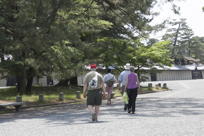
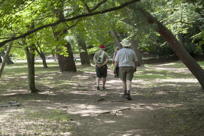
But the gardens as a whole were very fine. In the block to the left, the upper left is a view out on a formal part of the garden. Upper right was taken after we had climbed some into the less-tailored part of the grounds, showing how high the whole plant is above the city. That’s the Pavilion itself in the picture. The two pictures in the lower row give a feel for the walks in the upper reaches of the grounds.
We now got onto a bus that would take us to the Imperial Palace. Kyōto hasn’t been the capital of Japan since the 1860’s, but this was the seat of the Emperor, and the Palace remains. This is hardly used at all except for the highest ceremonial purposes, and otherwise it’s juat a relic. I’ll bet that the intrigue among the almost useless staff rises to unprecedented levels. Anyway, the grounds are big, and you certainly don’t expect the Emperor to live close to the street, even in 1850. So there was something of a walk into the grounds to get to the interesting buildings. Let’s leave the pictures of the Imperial Palace and our later peregrinations to the next page.
